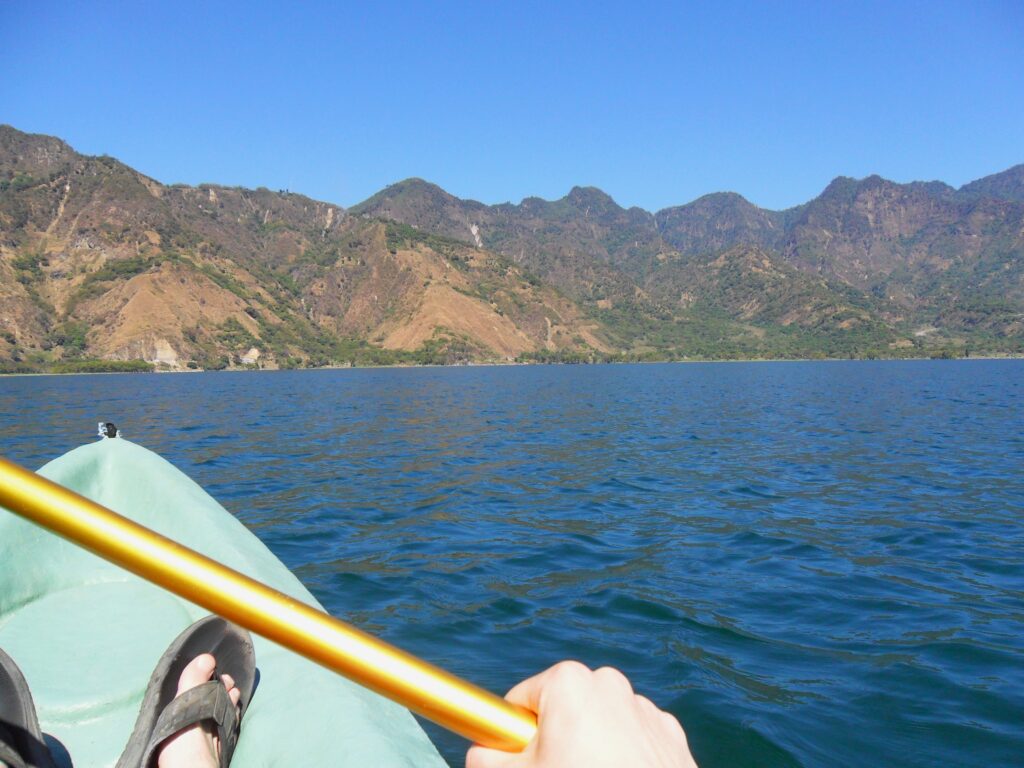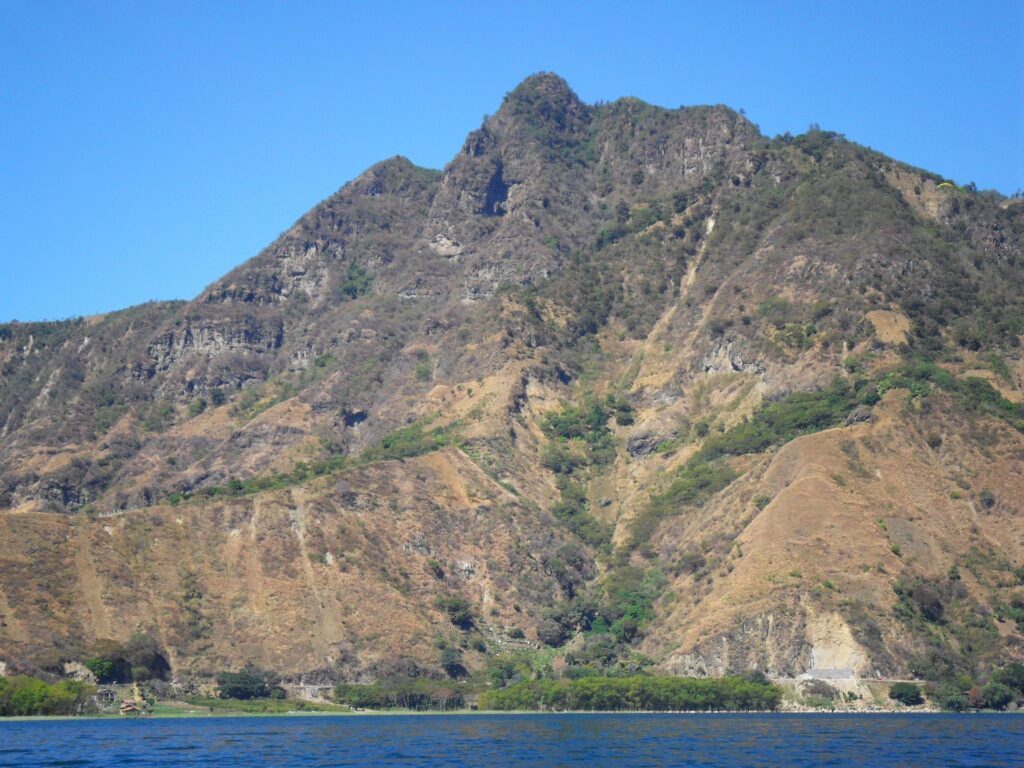Backpacking in Guatemala
The temperature in Flores was refreshingly cool when I arrived. It is a small town, situated on the shores of a lake, and surrounded by large swathes of forest. In my youthful naivety, I didn’t take the opportunity to explore the nature and wildlife nearby. Instead, I joined the droves of tourists there to see the Mayan site, Tikal.
Our early bus ride from Flores, slightly delayed after a breakdown enroute, arrived at Tikal for sunrise. Arriving early meant avoiding the crowds I saw at Chichen Itza. And it is a very different setting – in the midst of very tall trees, with abundant wildlife to spot while walking.
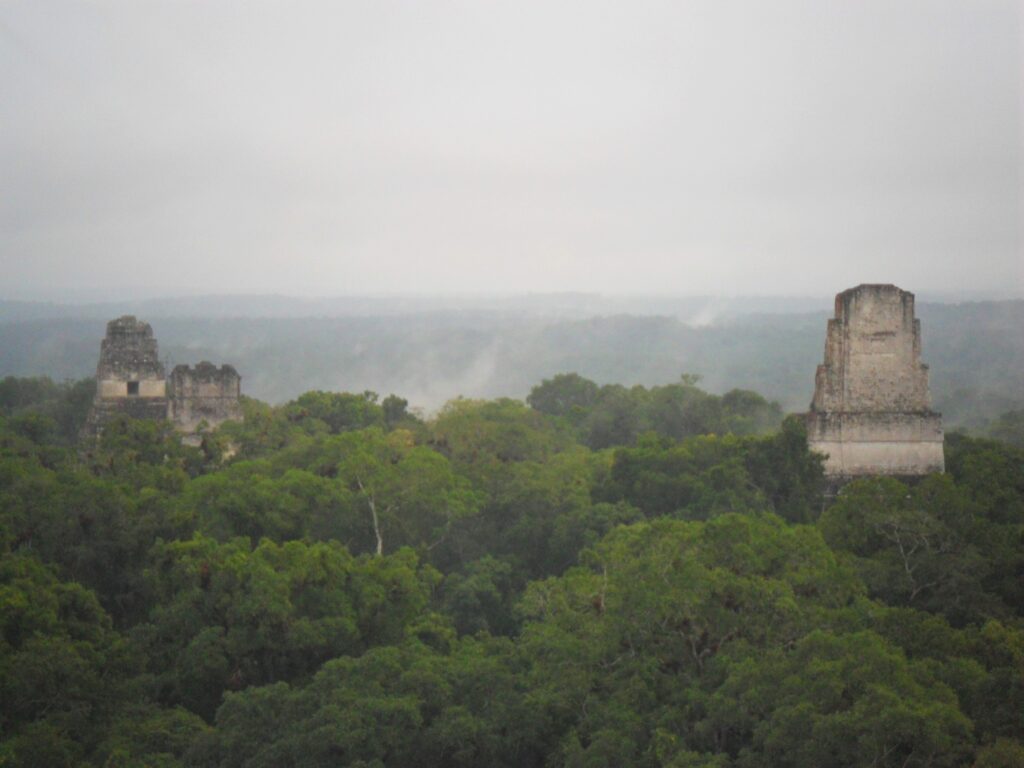
Tikal
Tikal was, at one point, the largest Mayan city. It was very famously used as Endor, in the third film of the original Star Wars trilogy – Return of the Jedi.
The tour took us under and over the various temples and buildings. We climbed one of the tallest temples, which gave an impressive panoramic view of the forest and city from above. When I walked below these vast structures, that reac as high as the trees, I could appreciate the scale of them. The tour guide told us the kings of old would have to walk up these pyramids, holding the weight of gold above their heads. If you could do that without falling, you probably deserved to be king.



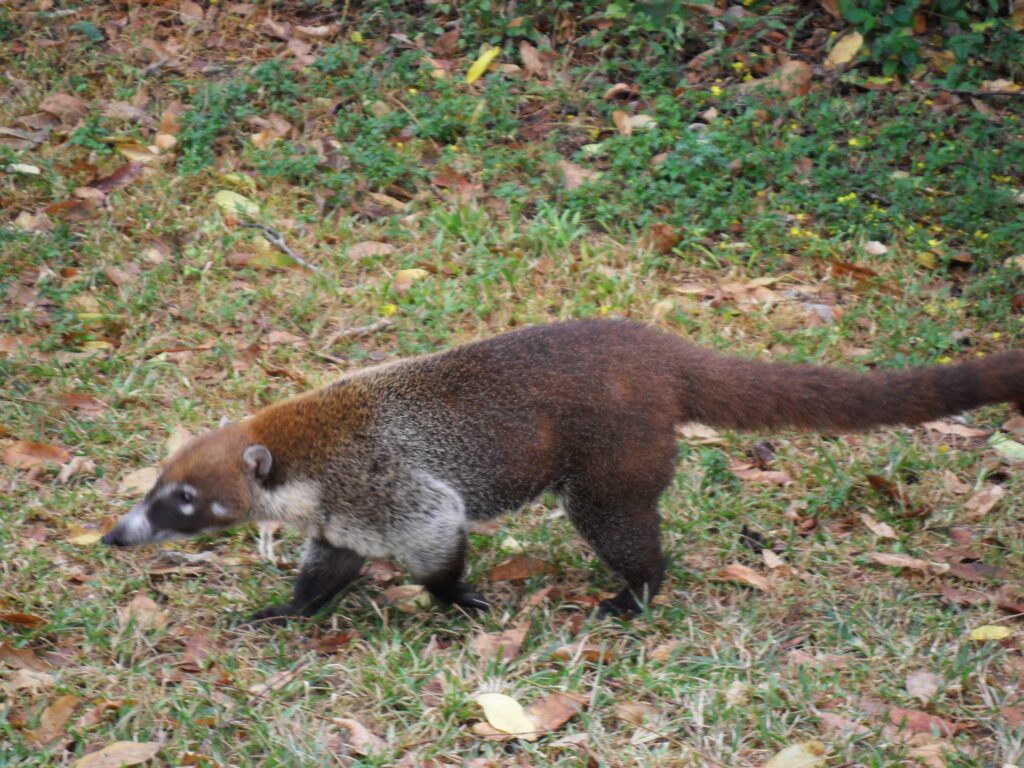
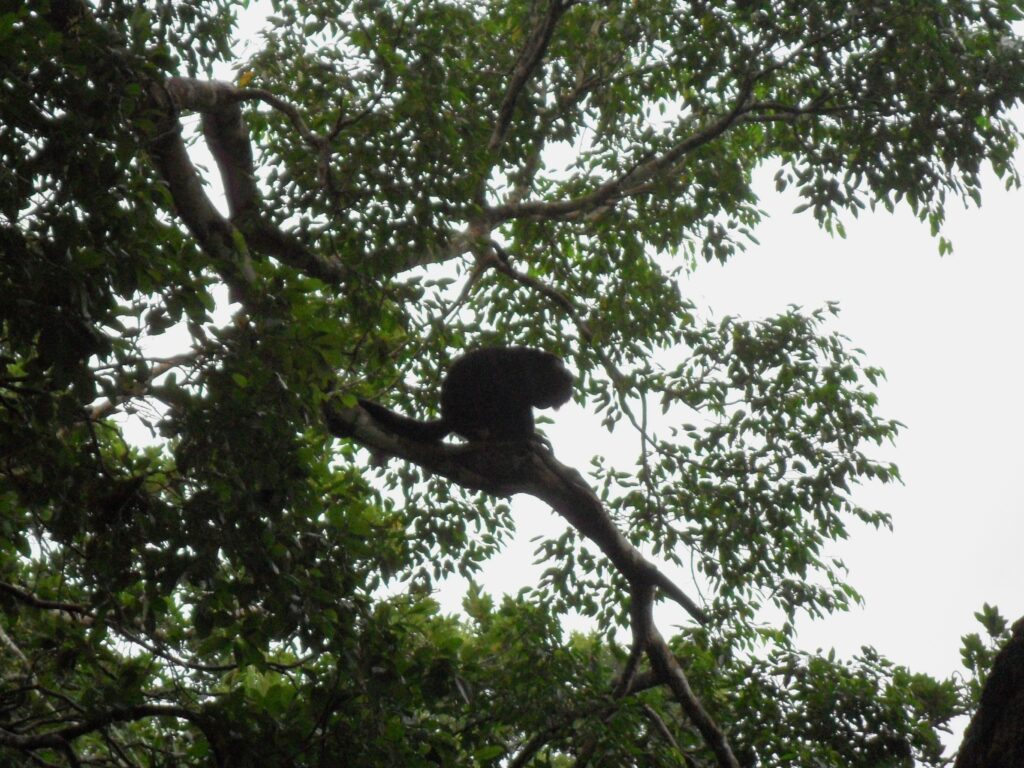
Semuc Champey
I learned about Semuc Champey only through chatting to other guests at the hostel in Flores. Having an open itinerary allowed me the flexibility to change plans at short notice. With that, a seven-hour bus ride took us over and through gorgeous valleys, providing the most spectacular views so far.
Semuc Champey is a haven of waterfalls and pools, explored by traipsing through the lush vegetation surrounding it. Some of the pools are calm and still enough to take a relaxing swim.
Nearby, locals use a network of caves for a more thrilling experience. A guide took a small group of us into the cave – with only a short candle each to provide light. Once inside, we had to navigate the caves by crawling and climbing. The most challenging test was passing through the areas of deep, dark water – swimming with one arm up to keep the candle dry.
It was around ten minutes in, we suddenly lost sight of our guide, who seemed to disappear into a waterfall ahead.
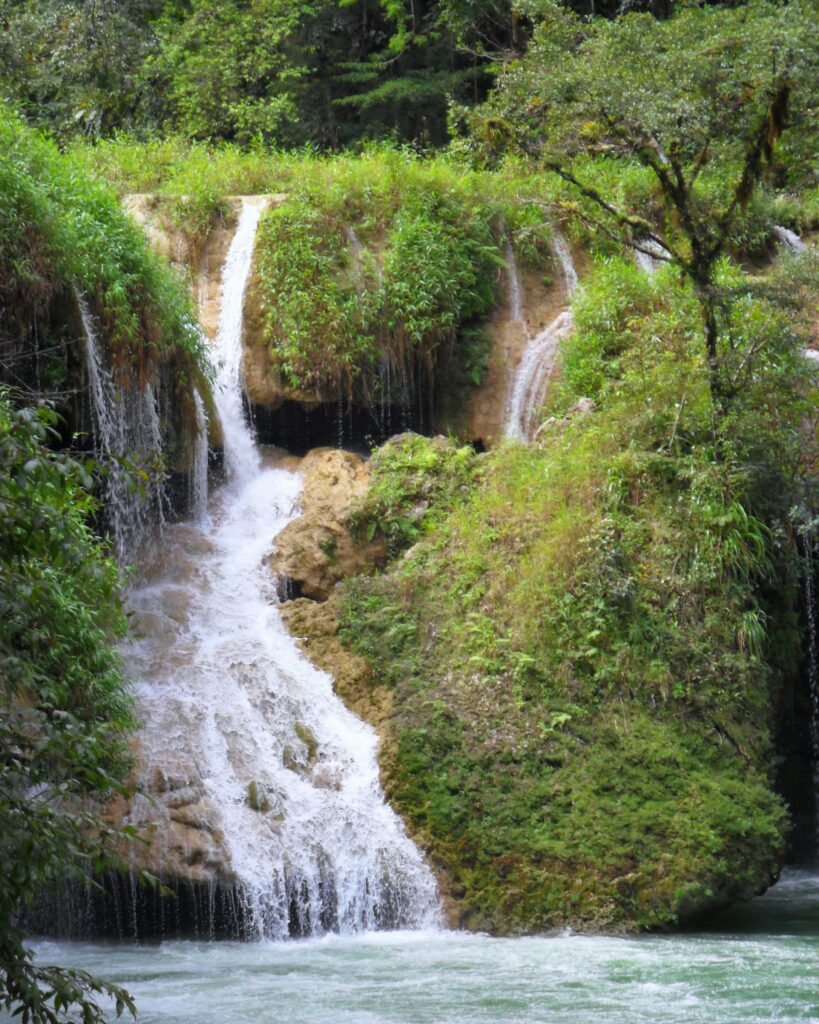
We were unsure if this was an accident, or deliberate, and how on earth we would get out. After an anxious two-minute wait, the guide returned – revealing the episode was a hilarious prank. We took turns to drop through the waterfall as well, before making our way out to daylight.
The accommodation here was a beautiful rustic lodge raised above the ground, with an opening to allow fresh air in, with plenty of space to allow several guests to sleep on mats on the wooden floor.
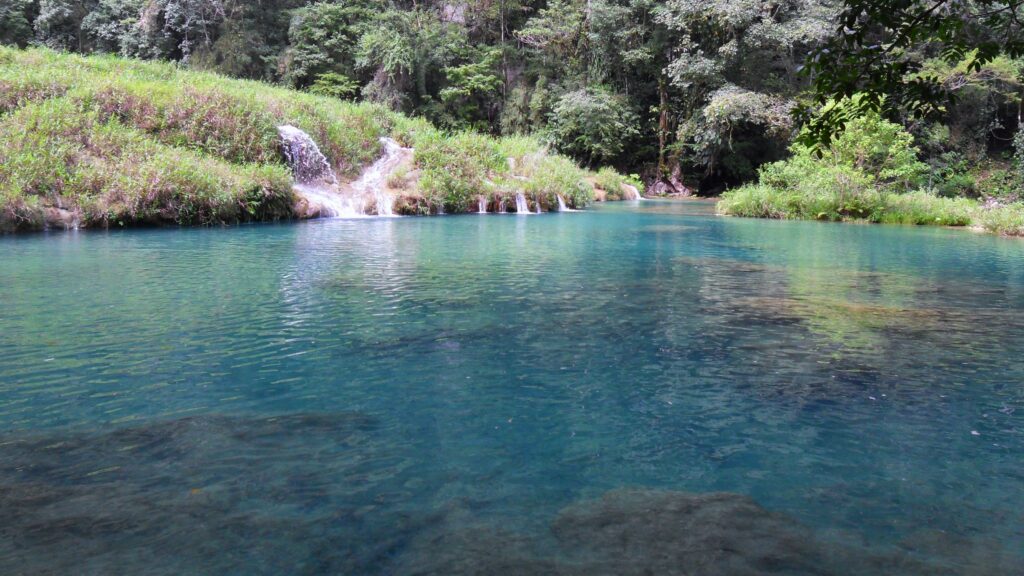

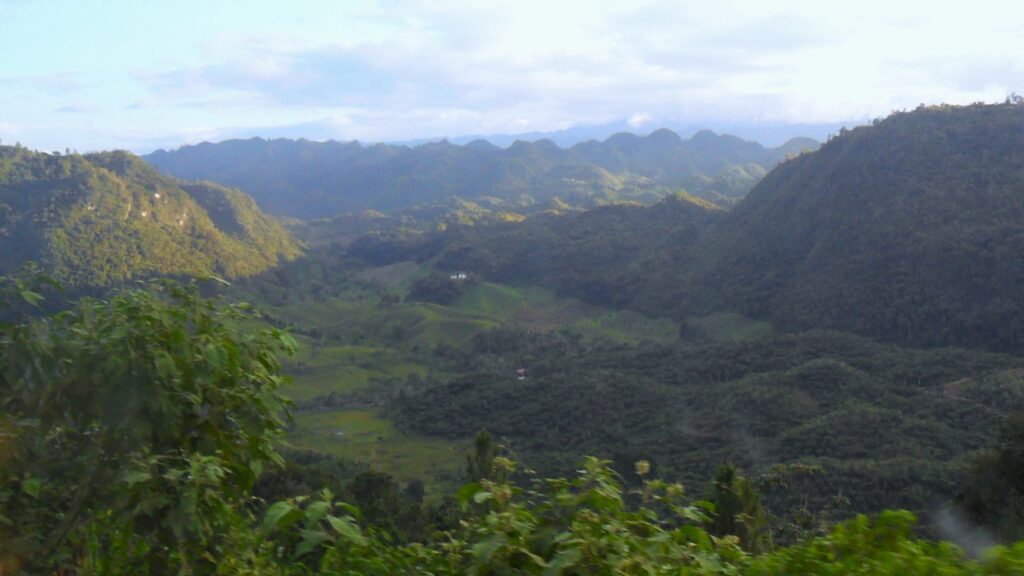
Antigua
Guatemala City’s dicey reputation led me to pass through solely in transit, on way to Antigua Guatemala – a World Heritage Site – located around an hour from the capital. The small city is known for Spanish colonial architecture, and it sits in the shadow of large volcanoes. It was the destination for my first week of Spanish lessons – an experience I talk more about here.
Antigua has been influenced by the influx of tourists and expats, and here I felt for the first time a sense of being targeted as a tourist, with offers to purchase trinkets and charms when I walked past the stalls. It is a lovely place, though, with good food, friendly people, and outstanding views.
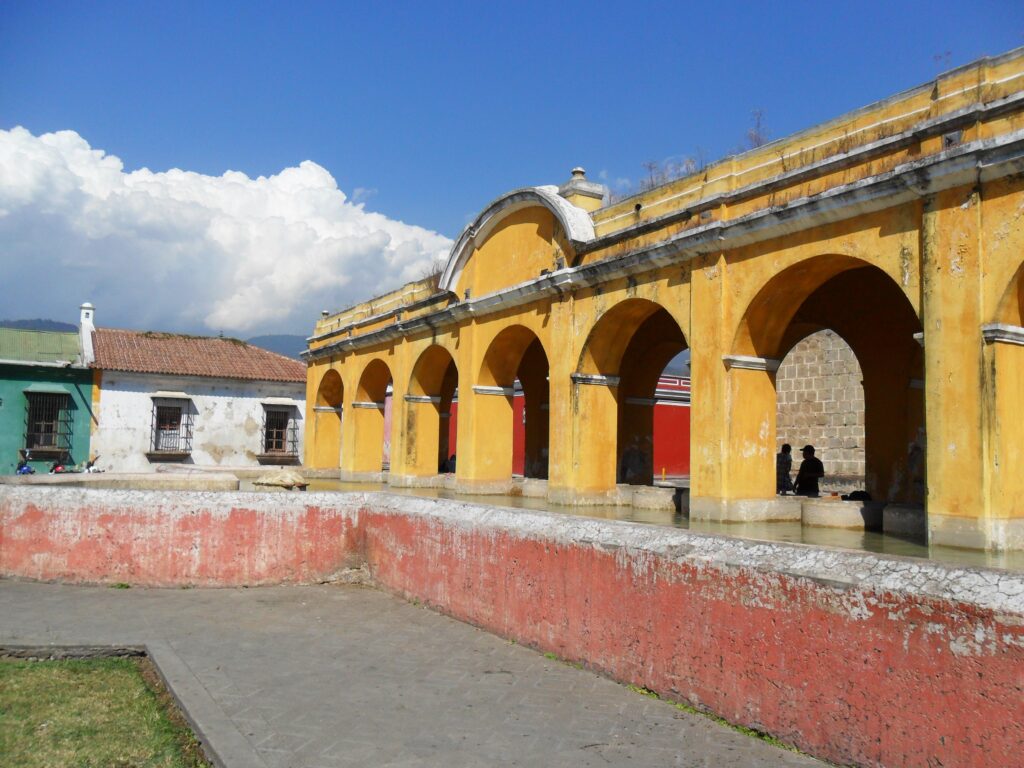
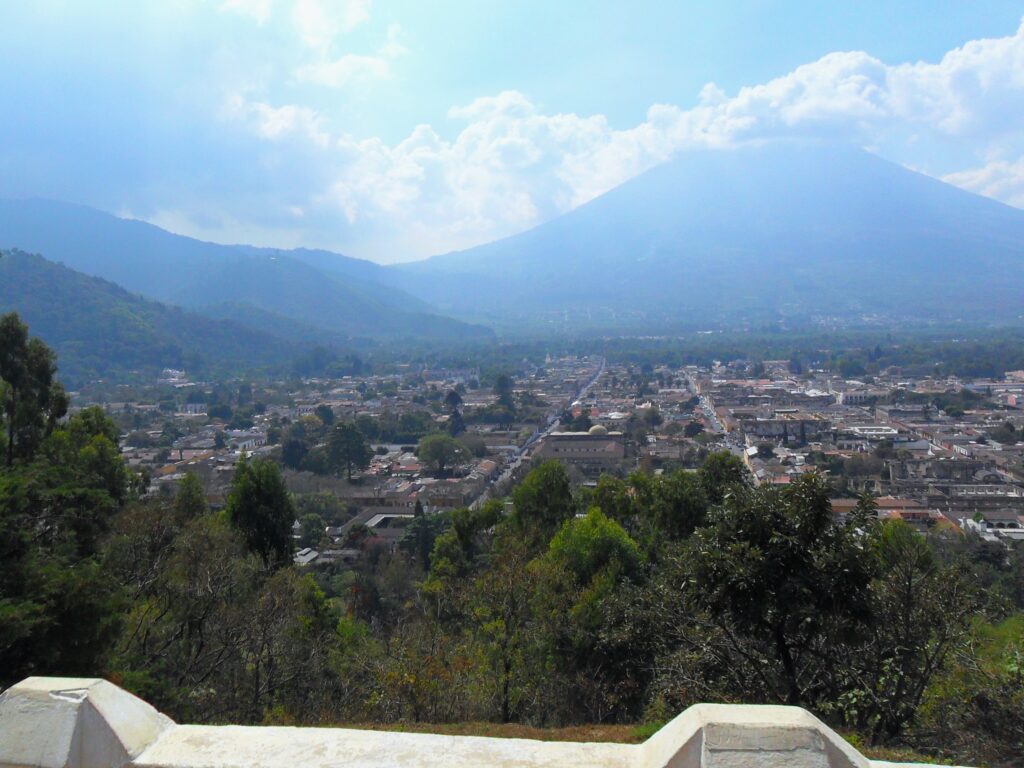

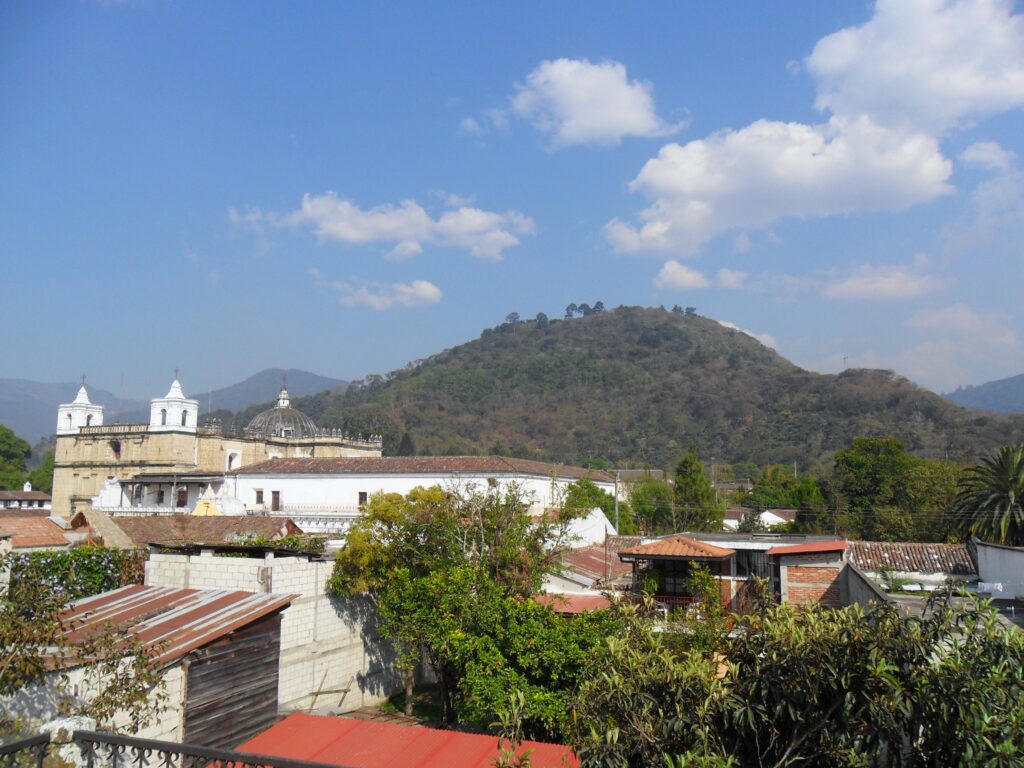
Lake Atitlan
This magnificent lake is encircled by a series of small towns, most of which are named after Saints – San Pedro, San Marcos, San Juan, Santa Catarina, Santiago… and Panajachel (seemingly the only one that isn’t saintly). I stayed in San Pedro for a second week of Spanish lessons. This small town is home to Tz’ utujil, Native American people, one of the surviving Mayan ethnic groups in Guatemala.
Walking through San Pedro, despite the emerging tourist industry, was a different experience to that in Central America so far. It had a quiet, relaxed, and welcoming feeling. When I arrived, for example, the owner of the Spanish school met me at the boat, and he offered me accommodation at the home of his brother and his family.
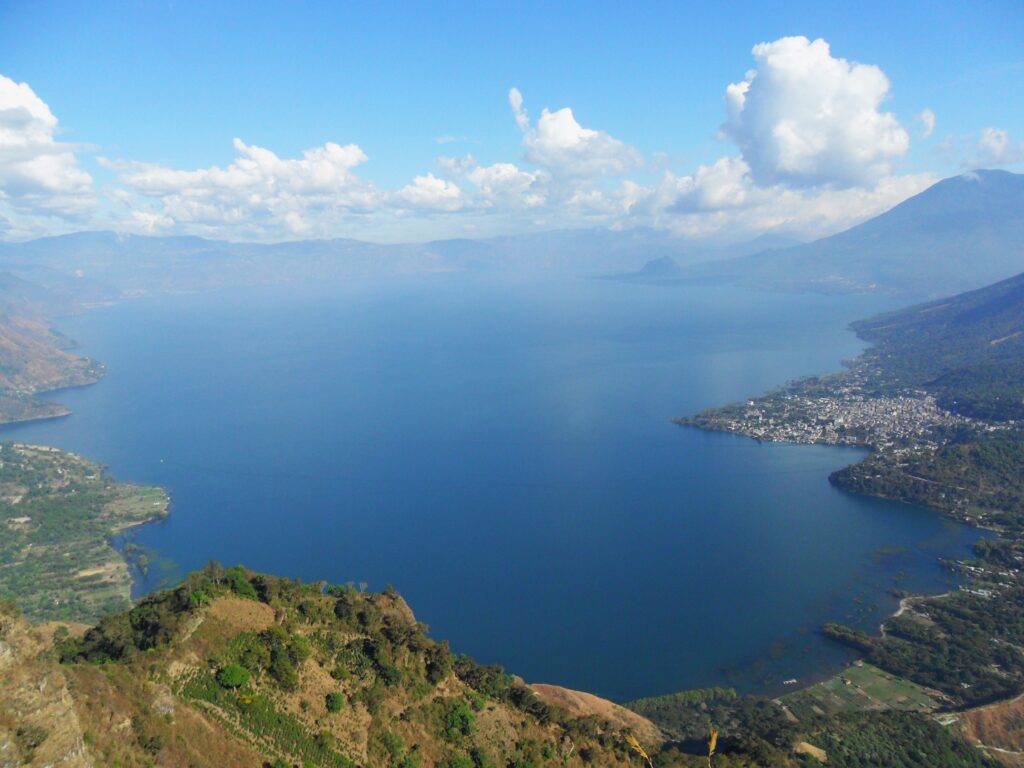
Life on the lake
The week consisted of morning lessons followed by organised events in the afternoons, such as travelling to a neighbouring village to see a traditional festival, barbecues with the other students, and a hike up to the top of the mountain at the edge of the lake.
I got to know the family, and after the dad witnessed what I was cooking for myself, I was honoured to be asked to cook for my hosts and their children. I cooked a simple pasta dish with vegetables in a tomato sauce, for which my host was extremely appreciative, and I can still recall his exclamation ‘¡que rico!’ to describe the smell of the cooking.
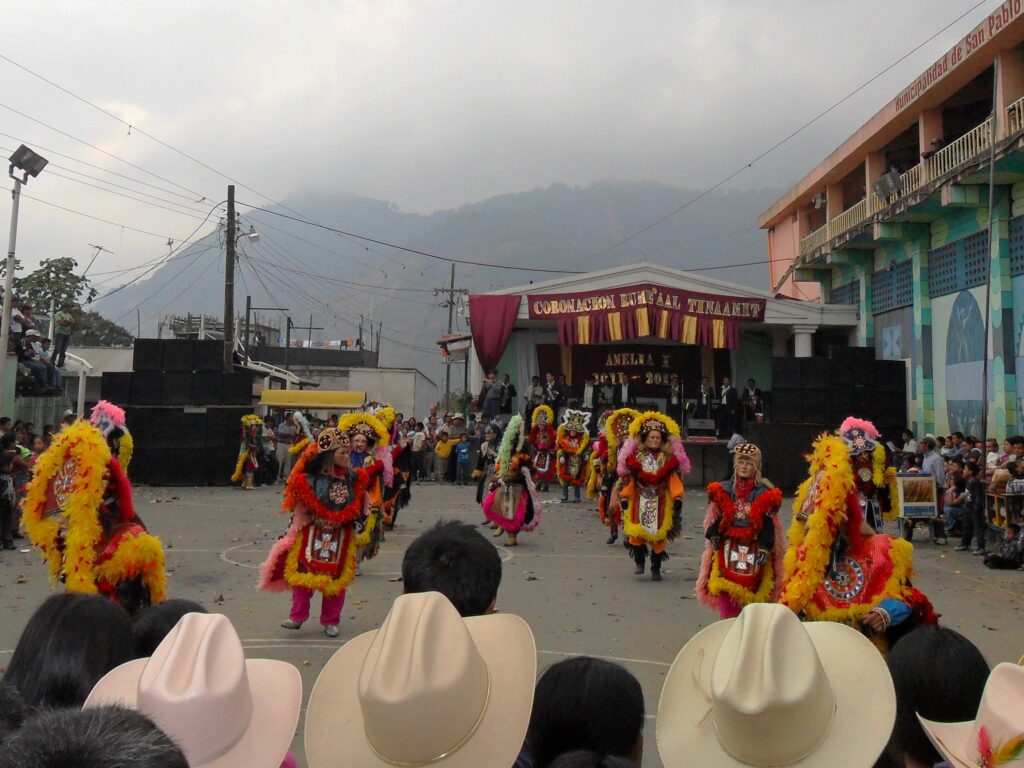
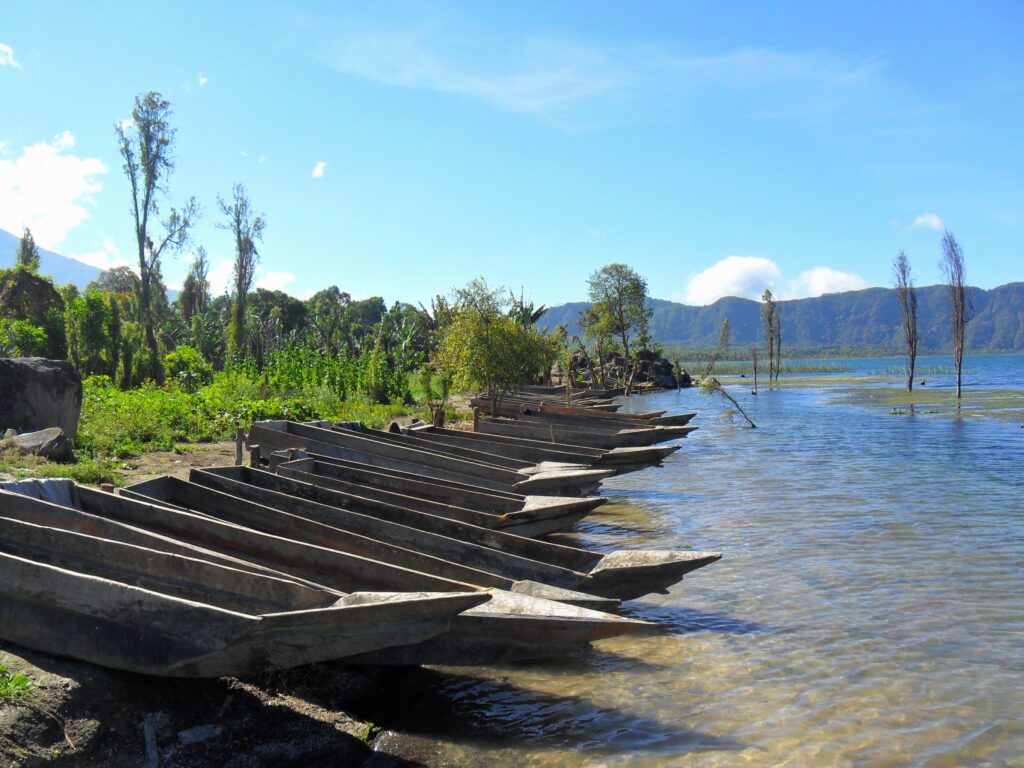
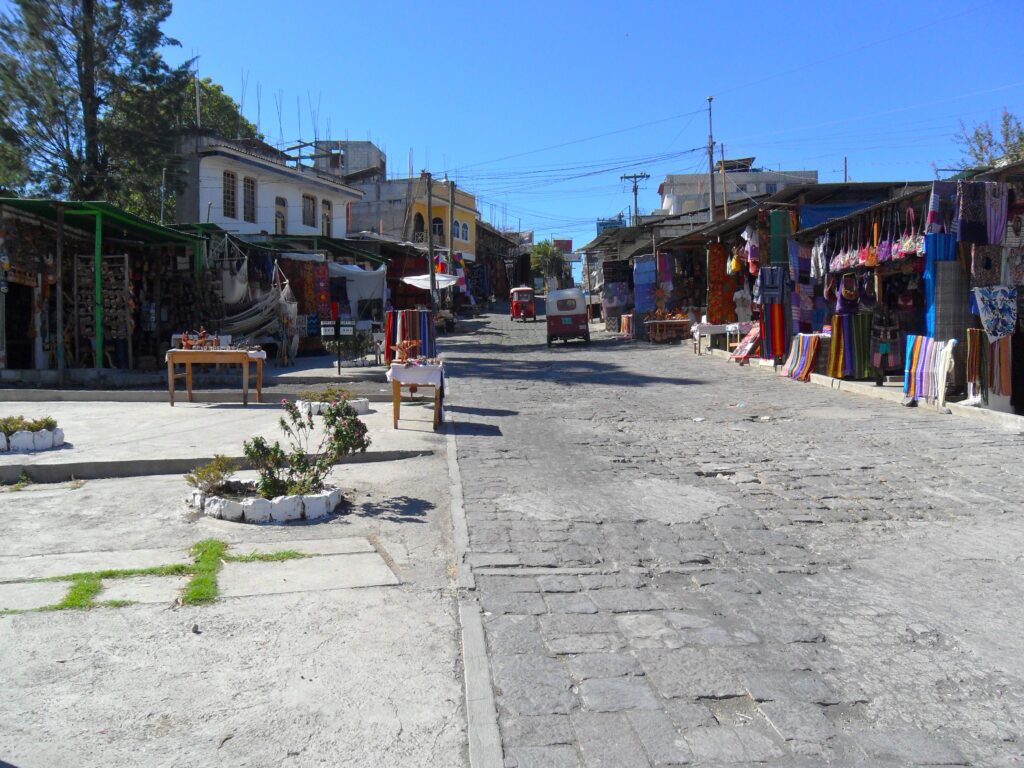
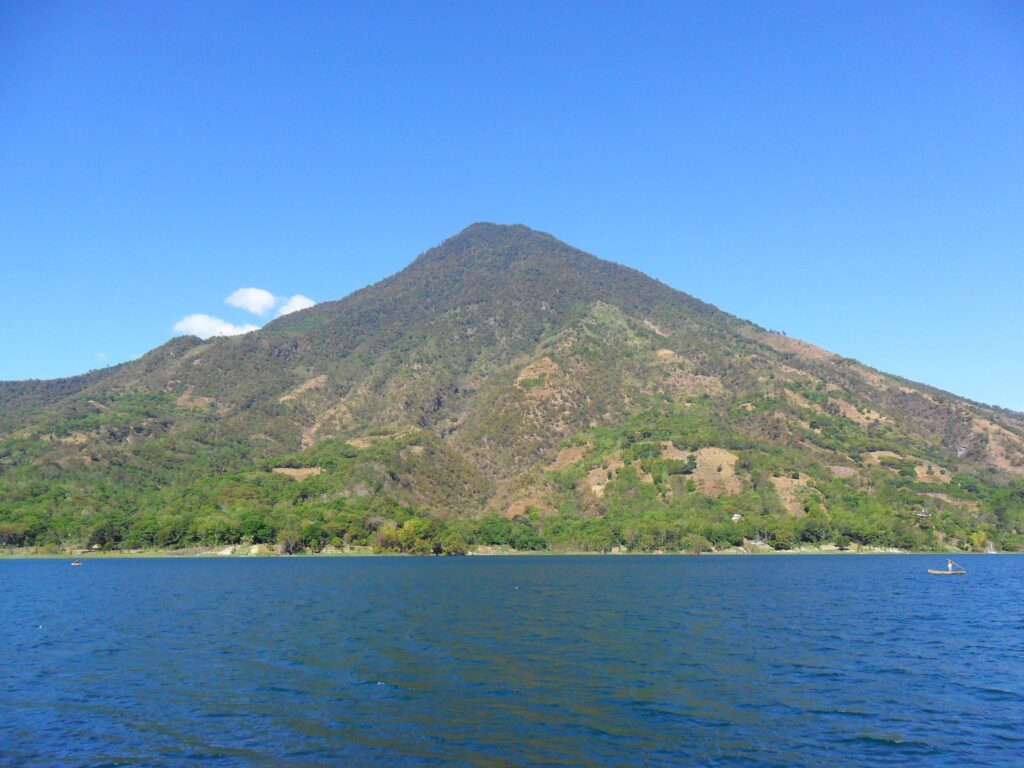
The kayak misadventure
The most gruelling venture of the trip so far was a kayak across Lake Atitlan, to another village, San Marcos. I was assured it was only 45 minutes before I set off, alone. A navigational miscalculation on my part meant I circled around the edge of the lake, instead of going directly, and it took two hours to arrive – paddling under the hot sun.
After docking for a short period at the village, I made the return journey. The wind had picked up and the waves were surprisingly strong – and I had to battle hard against the waves. I headed straight for San Pedro, but my lack of skill and failing strength meant I struggled for another two hours to home. For the rest of the day, I still had sensations of sitting in the kayak, bobbing in the waves.
The morning after, it was time to leave Guatemala, and head east to El Salvador. Sunburn contributed to a bad night’s sleep, contributing further to my unease on the bus journey up the narrow, winding, narrow roads. But I survived! From the roads above, I had a final chance to admire the extraordinary scenery I was leaving behind.
